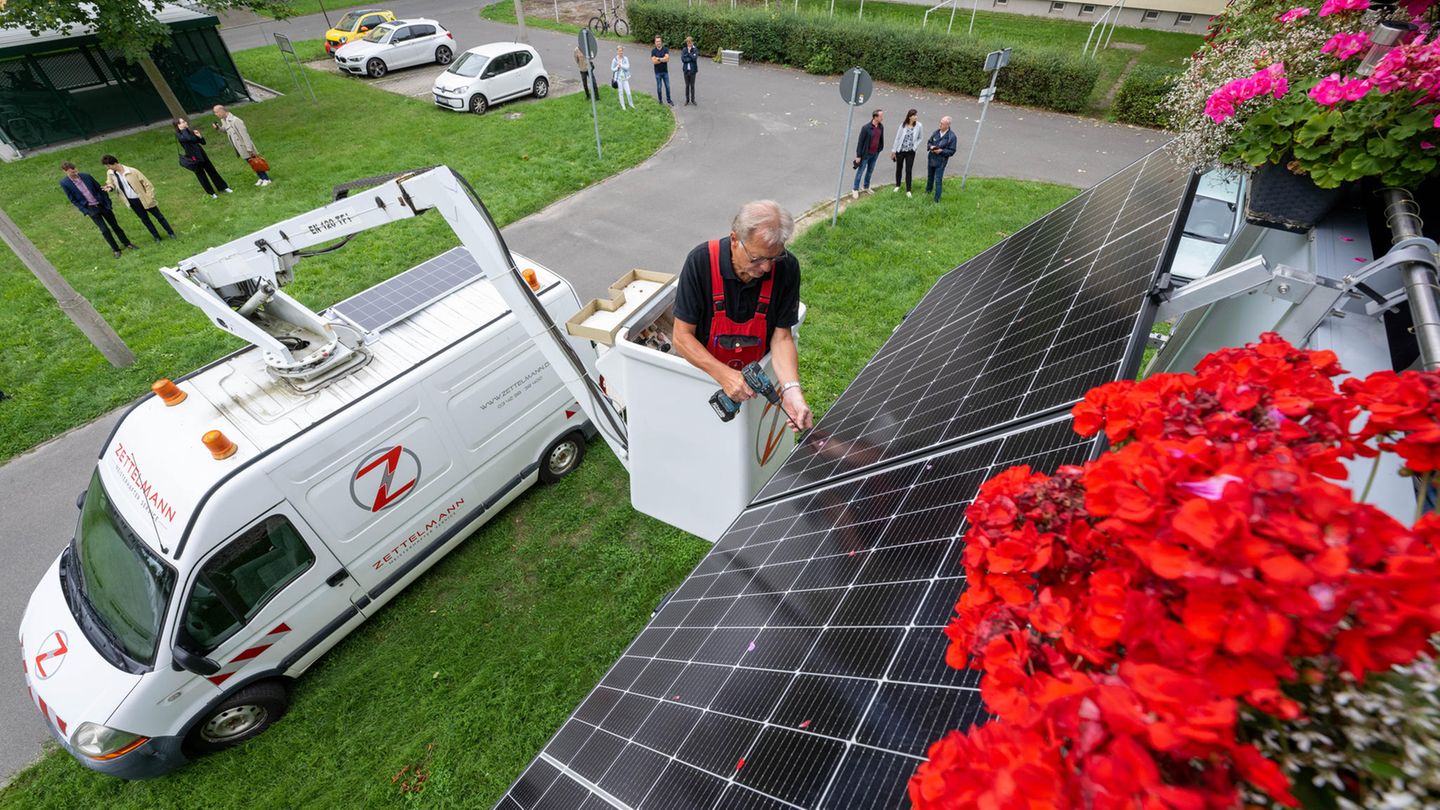Opinion
What growth: More than 400,000 German households now harvest electricity from their own balcony power plants. The latest figures on solar fever show that climate protection can be achieved – if the economy does it right.
Anyone looking for proof that the energy transition can also work in a way that is close to the people should take a look at the growth figures for balcony power plants. Around 400,000 households have already bought a small solar power plant to not only harvest herbs from balconies, but also electricity – over 50,000 systems were added in the first quarter alone. The total number is probably significantly higher, as not all power plants are recorded in the Federal Network Agency’s market master data register.
The first lesson from the boom: whoever democratizes technology wins. With balcony power plants, something that suppliers of e-cars missed: they are available cheaply, making them ideal entry-level bait. If you want to get to know solar power first, you don’t have to buy a roof system for 20,000 euros or even more. All he needs is a few hundred euros and a socket, then he has free power of up to 600 watts in his own home (soon even 800 watts will probably be allowed). According to the consumer advice center, he or she can then immediately cover up to 20 percent of their own needs. It’s not the world, but it creates a good feeling of doing the right thing, like the tomato from your own raised bed.
Thanks to the boom, balcony power plants are becoming increasingly cheaper
The more there are of them, the more systemically relevant balcony power plants become. The 400,000 don’t even make up one percent of the total German PV output, but they change thinking. Electricity is given a face, so to speak, users learn how enjoyable and inexpensive it is to generate energy themselves and therefore use it more responsibly. And due to scaling effects in production and sales, solar modules are becoming increasingly cheaper, which in turn attracts new interested parties.
What must now follow is a normalization of the system. Balcony power plants have to become everyday things in order to find even more friends. There are endless areas that could be used. Ideally, they should be no more complicated to install than a garden lamp.
And registration and application must follow the rules of pragmatism. If excess electricity is fed into the grid, the electricity meter should simply be allowed to turn backwards, as is common practice in the Netherlands (here this is only allowed temporarily, you need an expensive “bidirectional meter”). Alternatively, all network operators would have to be obliged to pay a feed-in tariff for the electricity they feed into the grid. Many people still exclude this contractually today.
Now we need rules to prevent quarrels
Above all, it is important to avoid any disputes with landlords or homeowners’ associations. The federal government has already decided that co-owners or landlords must generally allow balcony power plants in the future. They are to become part of the Condominium Act (Section 20) as “privileged structural changes”. But the rule is not yet in force, possibly in the second quarter. And: Owners and landlords are still allowed to set conditions, including in terms of appearance. The last word may not have been spoken yet. The German Tenants’ Association criticizes that it is not clear what is meant by this. There must be clear framework conditions in order to keep nickel-and-dime issues as rare as possible.
Maybe the electric car market will eventually get going again if car owners learn from the balcony PV manufacturers and finally offer cheap electric vehicles: Without entry-level products, a mass market will never emerge.
Source: Stern




